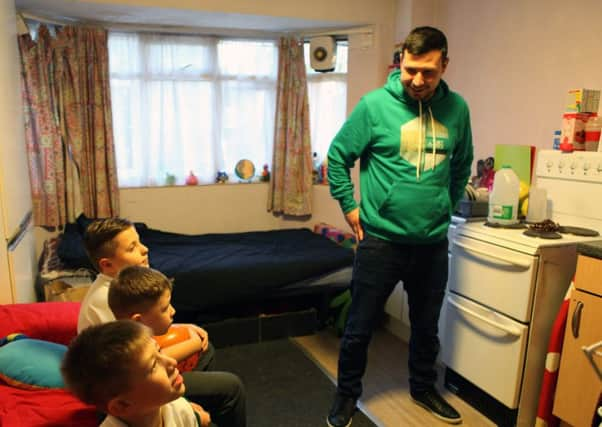Number of children in temporary accommodation up 17%
This article contains affiliate links. We may earn a small commission on items purchased through this article, but that does not affect our editorial judgement.


DOWNLOAD THE EDINBURGH EVENING NEWS APP ON ITUNES OR GOOGLE PLAY
Councils received 17,107 applications between April and September last year, a drop of 3% compared to the same period in 2015.
Advertisement
Hide AdAdvertisement
Hide AdA total of 14,124 cases were assessed as homeless or threatened with homelessness, down 2% on the year before.
Figures show that on September 30, there were 10,570 households in temporary accommodation, a rise of 97 (1%) compared with one year earlier.
The largest increases were in West Lothian (up by 107 households) and Edinburgh (an increase of 68).
On the same date, the number of children in such accommodation was found to have increased by 826, or 17%, to 5,751.
Advertisement
Hide AdAdvertisement
Hide AdThe statistics show 27 households were found to be in unsuitable temporary accommodation, with 12 breaches of the legislation covering the provision of housing for families with children or a pregnancy.
Housing Minister Kevin Stewart welcomed the decrease in the number of homeless applications.
He said: “It is, however, our aim to stop people becoming homeless in the first place, which is much better for our people and our communities, and of course our homelessness services.
“While there are many reasons for families staying in temporary accommodation, I am disappointed in the increase in the number of children in temporary accommodation.
Advertisement
Hide AdAdvertisement
Hide Ad“Although the majority of temporary accommodation is good quality, well managed social housing which is of the exact same standard as permanent accommodation, I am keen to see these numbers decrease and people to have a settled home.
“We are addressing the various reasons for families staying in temporary accommodation and I will continue to work together with local authorities and partners in the best interests of all households.”
Statisticians attribute the fall in homelessness applications to the impact of local authorities adopting an approach to homelessness known as housing options, which focuses on prevention by exploring all possibilities to help those looking for housing.
Separate figures show councils received 24,355 approaches on housing options between April and September, down by 4,605 (16%) compared to the same six months the previous year.
Of these, 44% went on to make a homelessness application, 22% stayed in their current accommodation and 17% found an alternative home.